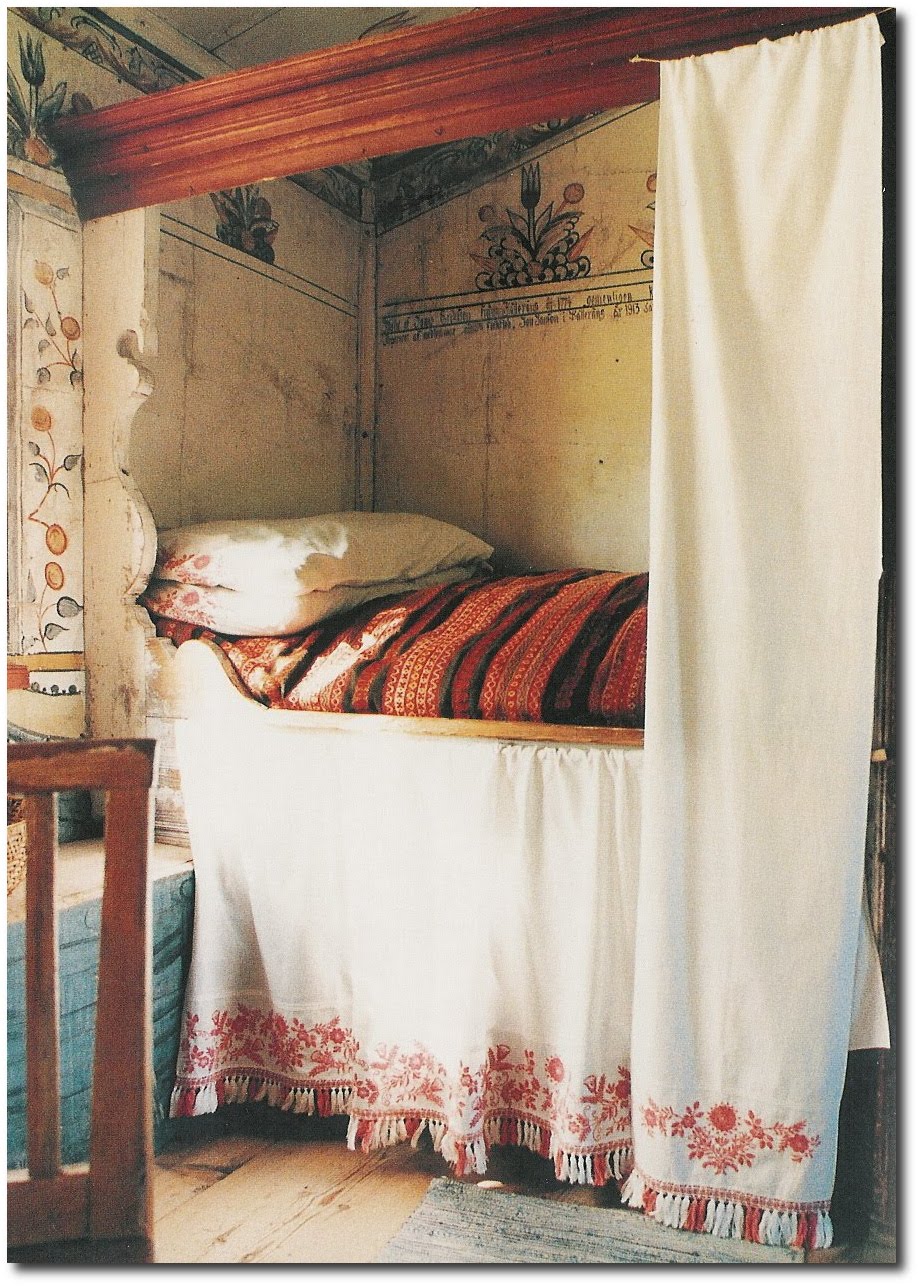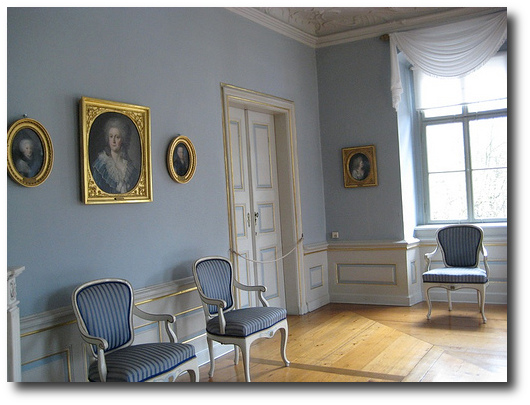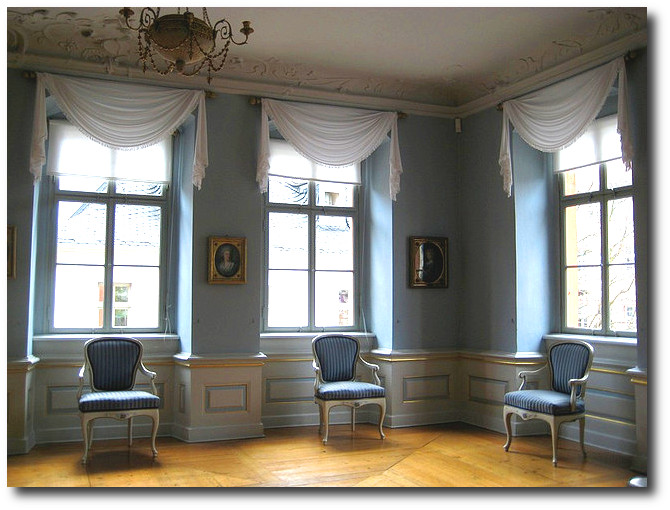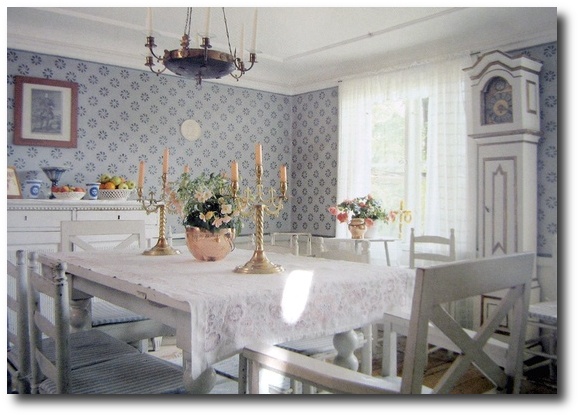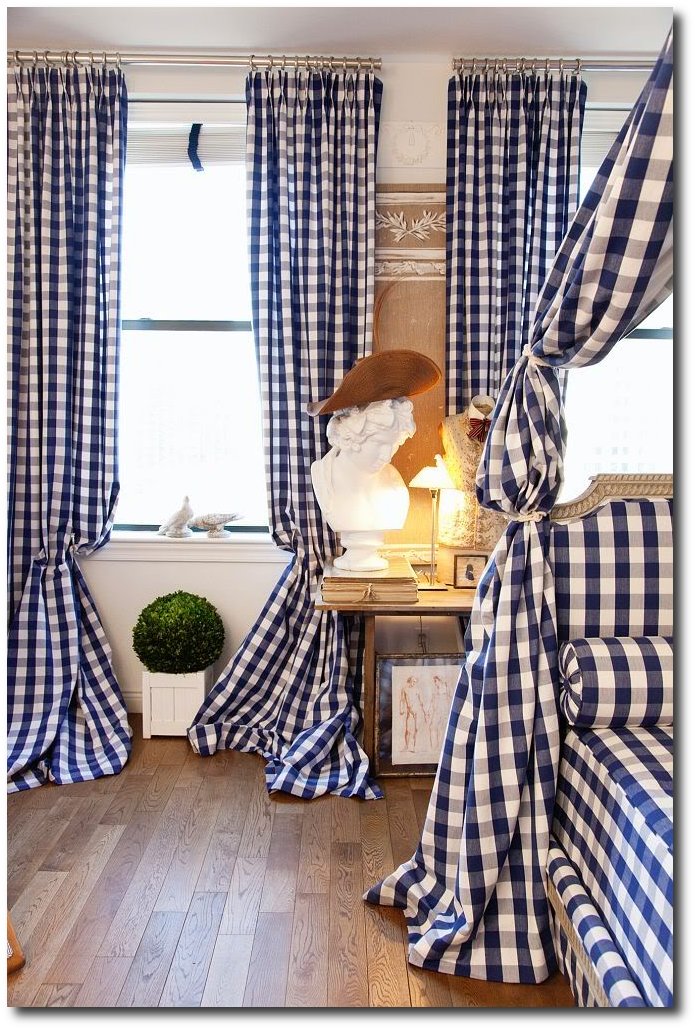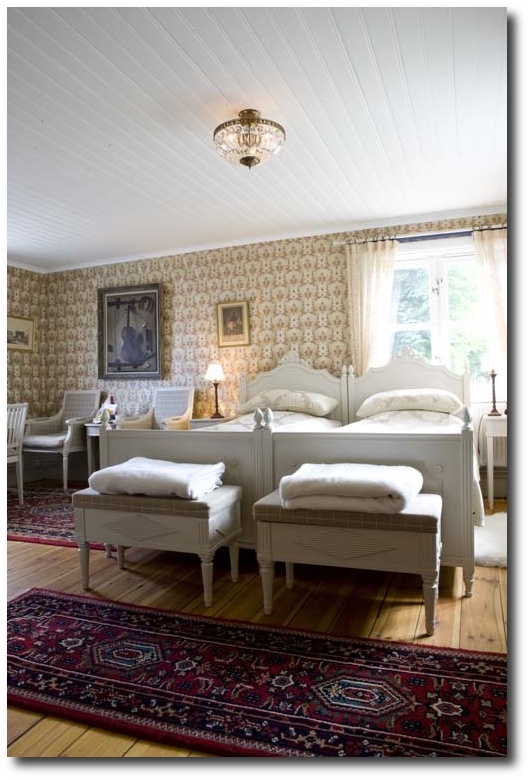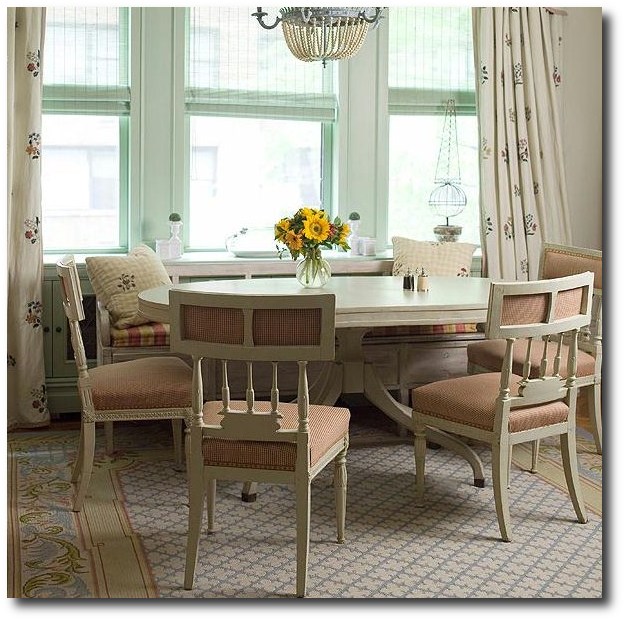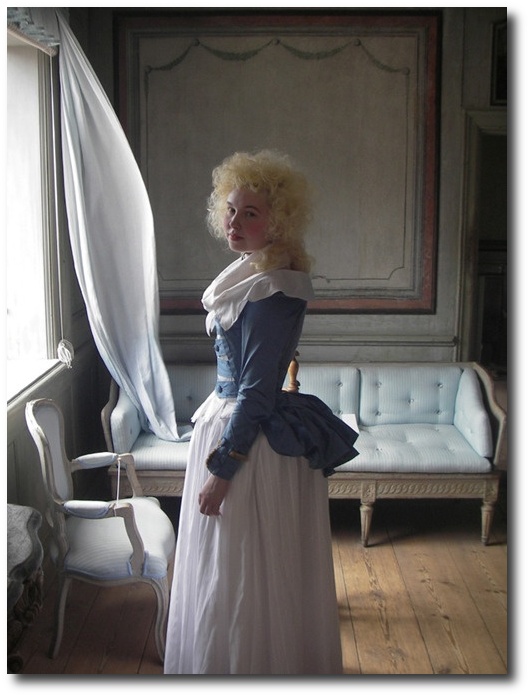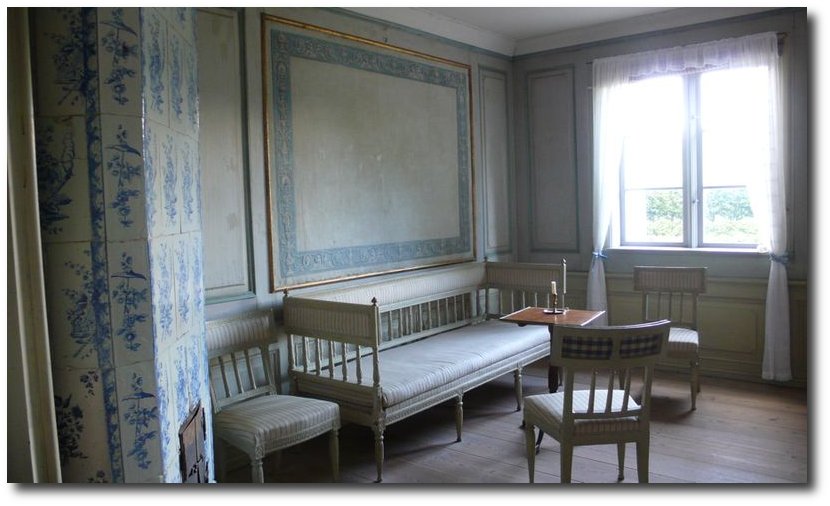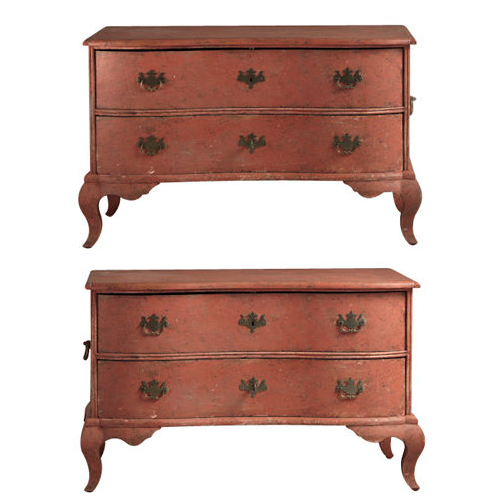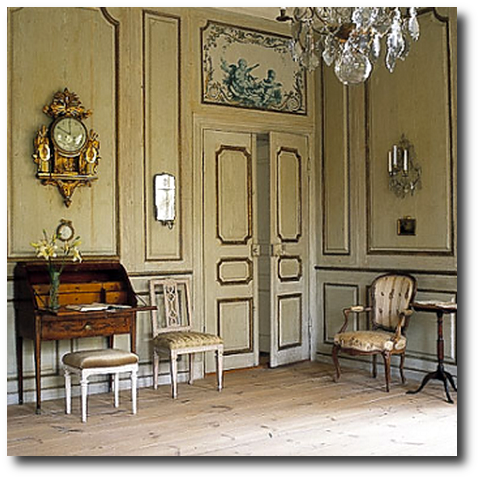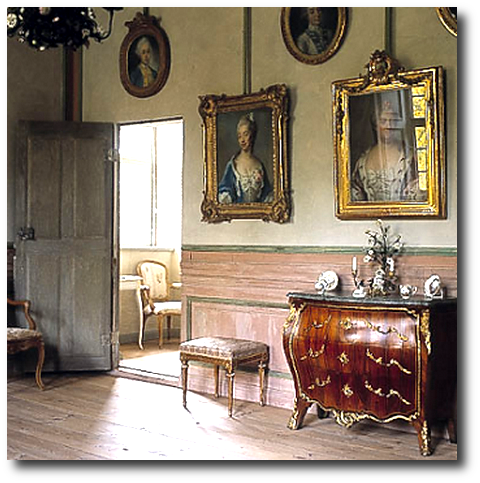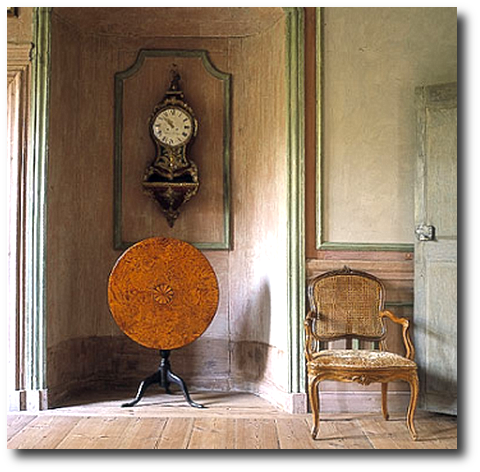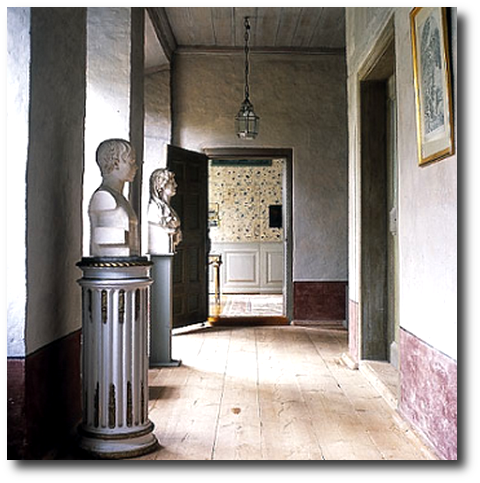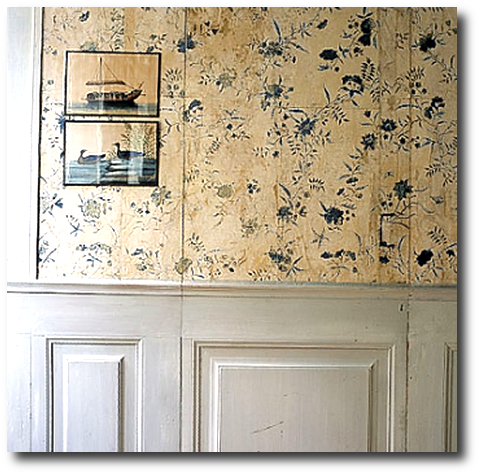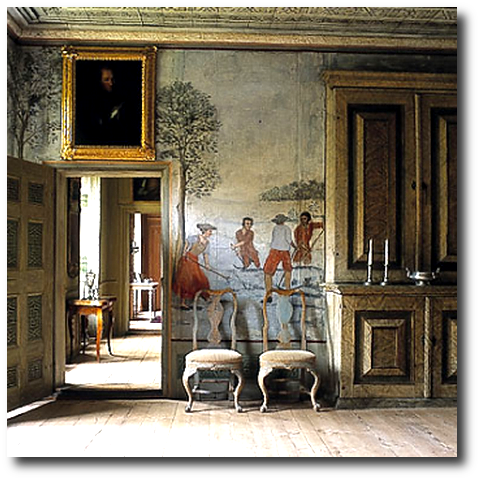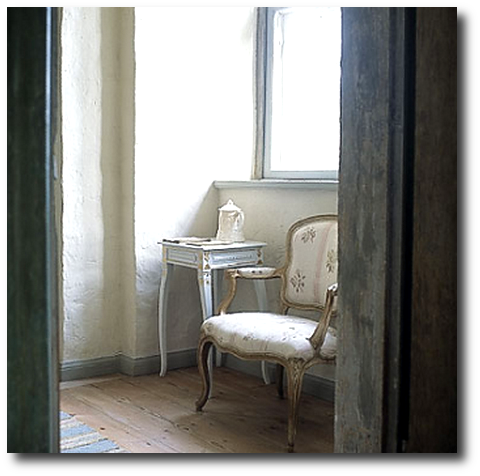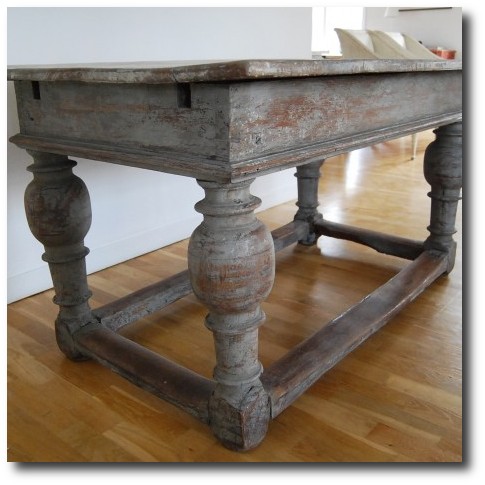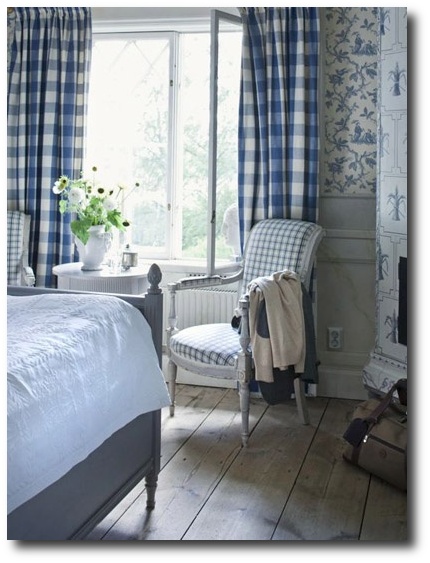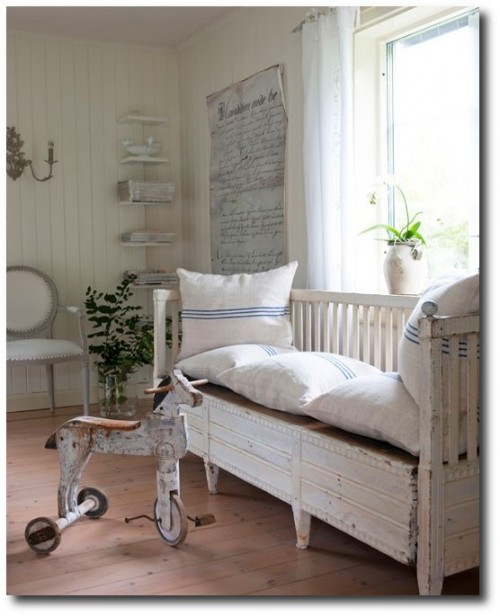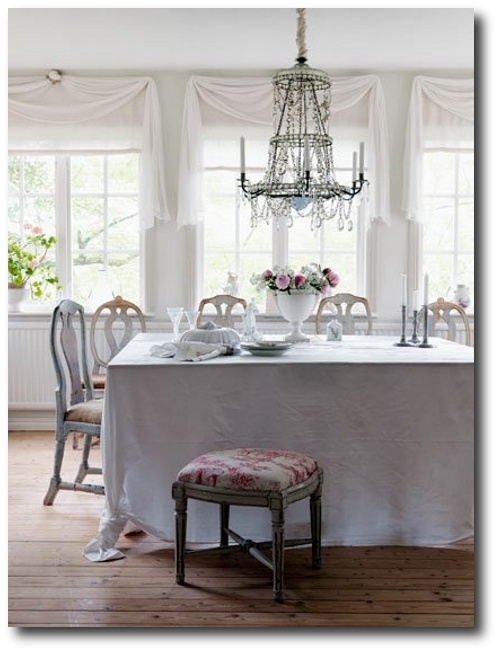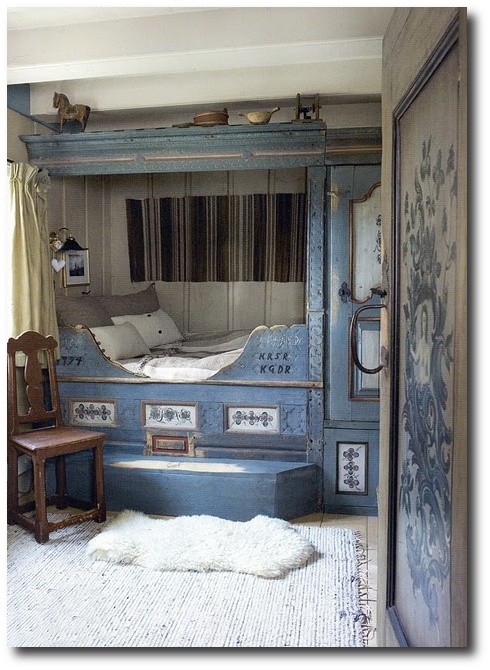69 Inspiring Pictures Of Nordic Country Style Decorating
Bogstad Manor is a protected cultural monument and one of the few country estates in Norway. The history of the estate dates back to 1649, while Norway was still Catholic the land was rented out to tenant farmers by Hovedøya Monastery. After the reformatin in 1536 it was confiscated by the Crown. It was then in 1649 that the Danish-Norwegian King Fredrik III sold Bogstad and number of other farms to Morten Lauritzen. This land provided great timber for sawmills which was rapidly expanding in the 17th century.
The Manor remained in the same family from 1649 until it was left to the Bogstad Foundation in 1955, administered under the Norwegian Folk Museum. The museum has left the estate authentic to the original time period, leaving a monument that shows layers of layers of history.
Peder Anker, became the first Norwegian Prime Minister in Stockholm in 1814 during the union with Sweden (1814-1905). From 1773 to 1780 Peder Anker made some alterations and additions to Bogstad Manor’s main building. He designed the ballroom with inspiration from Versailles, bought a huge collection of paintings in Rome and created the first English landscape park in Norway.
Bogstad Manor is open to the public throughout the year, as well as guided tours of the main buildings are offered from May-September. Bogstad Manor also has copies of artifacts for sale in the museum shop that relate to the history and tradition at Bogstad manor. The museum shop sells glass, pewter and porcelain.
The gardens at Bogstad are sensational to see. The baroque garden was established in the first part of the 18th century. The English style park was created by Peder Anker around 1780 and has canals and ponds for carp and ducks. Peder Anker introduced more than 400 rare trees and plants from abroad. This park became a model for number of parks in Norway.
Bogstad Manor In Norway
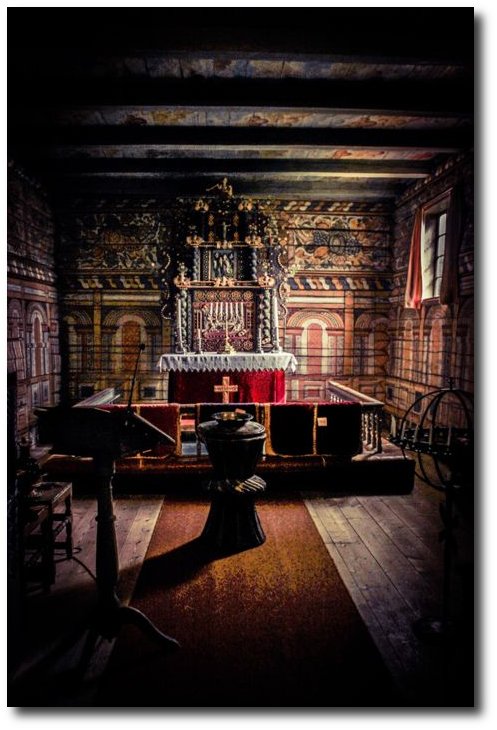 Stave church, Rollag, Buskerud, Norway
Stave church, Rollag, Buskerud, Norway
Picture Credit Visit google.no
Røldal stave church, Hardanger region in Norway. The church was built at the end of the 13 th century and is famous for its crucifix. According to legend it sweats once a year (July 6 th), and the sweat has healing power. After Trondheim (Nidarosdomen cathedral), Røldal was the most important site of pilgrimage in Norway during the middle ages.
Garden Snails – Cepaea Hortensis (Detail) New painted ceiling on antique floorboards.
Peter Korver Amsterdam 2008
Norwegian cubbord beds adorned with wood carvings and Rosemaling
The colorful knotted throw was created to compliment the wall painting.
Visit homedesign.marthastewart.com
“The lady’s bedroom at Skogaholms herrgård (Skogaholm Manor), Skansen open air museum, Stockholm.” Visit upload.wikimedia.org
Antique 1840-1870 Swedish Mora Clock Visit seattle.craigslist.org
Swedish Antiques Visit bukowskismarket.com
Stora Nyckelviken, Stockholm – Visit upload.wikimedia.org
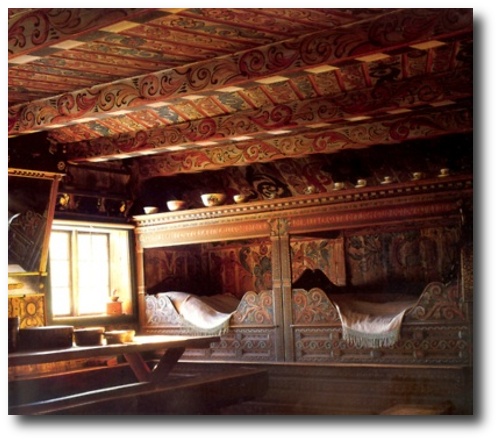 Hall (ivistoga) with intricate rosemaling; Yli farm in Telemark
Hall (ivistoga) with intricate rosemaling; Yli farm in Telemark
Skansen Museum in Stockholm- See More At New Girl’s Accessories Blog
Länna Prästgård, Norrtälje Visit homedesign.marthastewart.com
Skansen Museum in Stockholm- See More At New Girl’s Accessories Blog
Skansen Museum in Stockholm- See More At New Girl’s Accessories Blog
Two Scandinavian Homes Visit inspiracionline.blogspot.com
Lone Ranger Antiques 321 Walnut Street Hollywood, Florida, 33019.
Swedish Palette – A Galvinized Pail Is Used As A Vase
Näs herrgård, Norrtälje, Uppland –Wikipedia
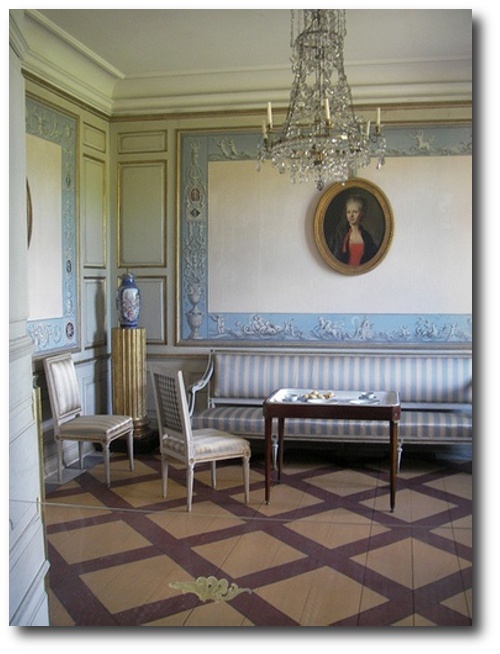 Skogaholms Herrgård, Skansen, Stockholm.
Skogaholms Herrgård, Skansen, Stockholm.
18th century weeks at Skansen by Johanni on Flickr
Sunlight in the dining room at Haga, Haga Pavilion, Late 18th century, Gustaviansk or Swedish Neoclassicism Photograph by Magnus photo Seen on Pinterest
Sweaters by Designer Solveig Hisdal
Traditional Swedish Nordic Dining Rooms – Visit solgarden.se
Visit knowingtheroyals.wordpress.com
Adolf Frederick was born, 14 May 1710 -12 February 1771) was King of Sweden from 1751 until his death. His father was Christian Augustus (1673—1726) duke and a younger prince of Schleswig-Holstein-Gottorp, prince-bishop of Lubeck, and administrator, during the Great Northern War, of the duchies of Holstein-Gottorp for his relative Charles Frederick. His mother was Albertina Frederica of Baden-Durlach. On his mother’s side, Adolf Frederick descended from king Gustav I of Sweden and from Christina Magdalena, a sister of Charles X of Sweden. From both his parents he was descended from Holstein-Gottorp, a house with a number of medieval Scandinavian royal dynasties among its ancestors. Adolf Frederick was also a 13th-generation descendant of Erik V of Denmark; a 13th-generation descendant of Sophia of Denmark and Valdemar I of Sweden; and an 11th-generation descendant of Euphemia of Sweden, Duchess of Mecklenburg and her husband the duke Albrecht.
Pair of Swedish Baroque Commodes created in the 1850s. Unknown Dealer
Nordic Architecture Visit homedesign.marthastewart.com
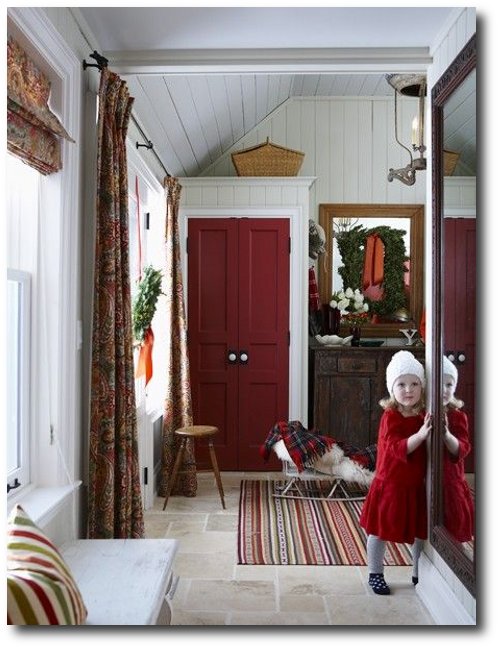 Sarah Richardsons Country House Visit houseandhome.com
Sarah Richardsons Country House Visit houseandhome.com
GRUVGATAN 13 Blog Visit gruvgatan13.blogspot.se
The pale colors and bare windows give this room a Swedish feel….Colefax and Fowler
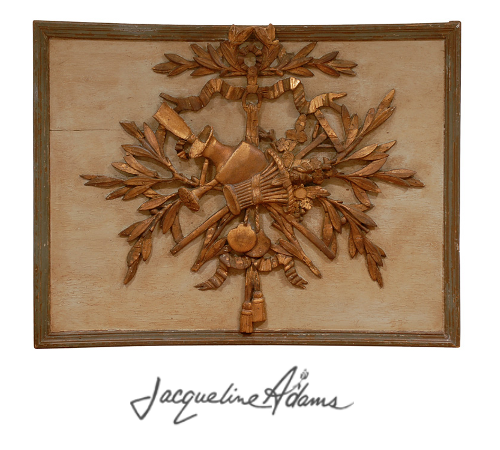 18th Century French Carved Wood Louis XVI Panel
18th Century French Carved Wood Louis XVI Panel
18th Century Giltwood Barometer with Allegory of Science
This comfortable and fresh vacation home displays simple palette combined with clean lines and rustic finishes. In place of a traditional oil painting, designer Jessica McIntyre created an art installation for the dining room with wall brackets from Ballard Designs, pewter chargers from Pottery Barn, antler trophies from Two’s Company and antique Chinese water vessels from Club Cu. The rustic Durango light fixture by Arteriors Home contrasts nicely with the more traditional Zentique dining chairs. The tonal damask rug is from Shaver-Ramsey.coloradohomesmag.com
A Swedish Farmhouse- Source: Skeppsholmen.
Lennart Castelius Antiques & Interiors- here
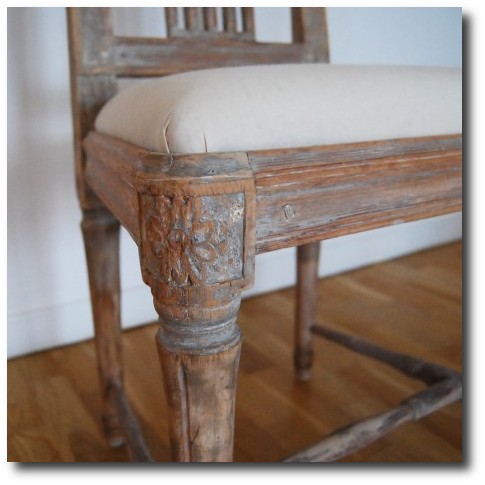
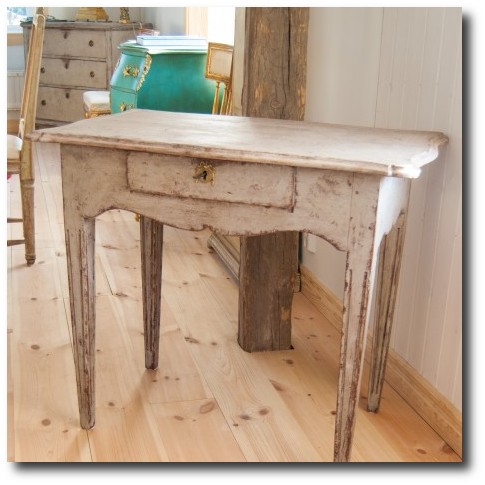
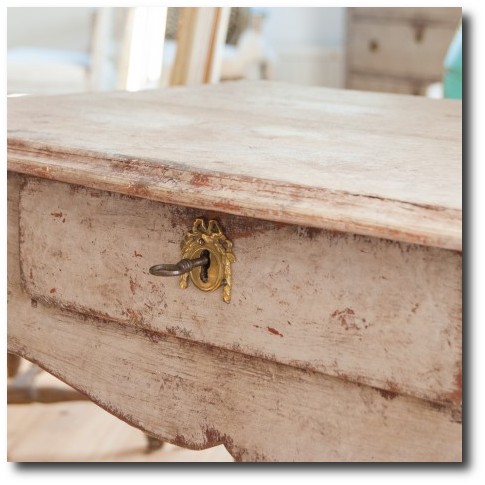 Lennart Castelius Antiques & Interiors
Lennart Castelius Antiques & Interiors
Pictures:












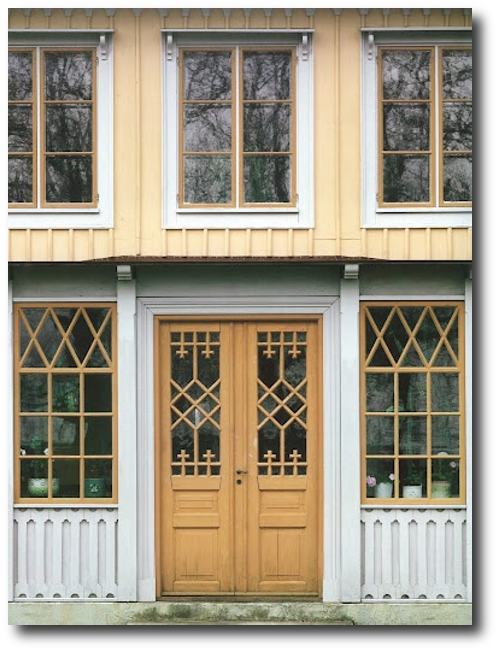






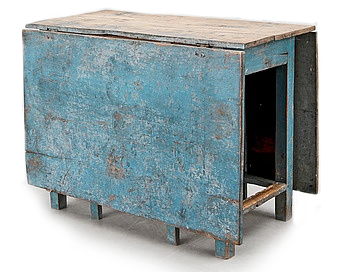



Save
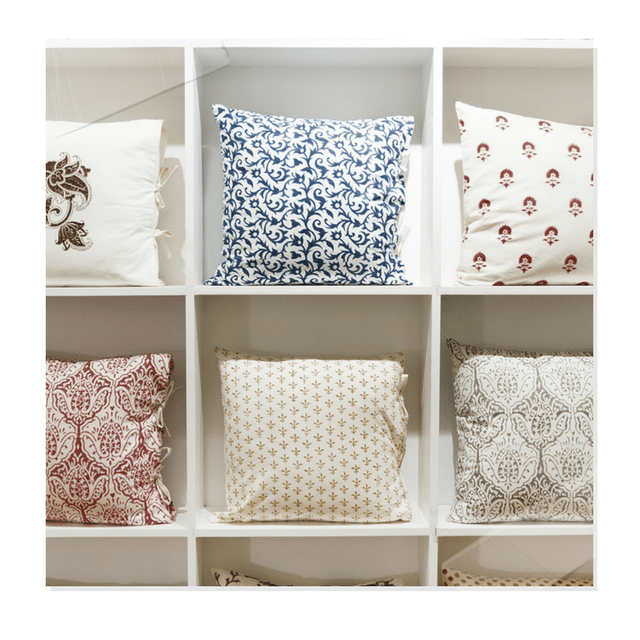
Les Indiennes Fabrics

Mary Mulcahy’s designs, first developed for her block-printed textiles, now grace the wall with the Les Indiennes collection by IVM Prints. The 12 hand-screened wallpapers include Rayure, left, and Veronique, both in indigo; additional colors are offered, Seen in Elle Decor April 2011
The company Les Indiennes is known for their beautiful hand-blocked textiles. Founder, Mary Mulcahy had a desire to find naturally dyed cotton, with large scale single colored motifs, but was unable to locate fabrics close to what she had in mind, so she created her own. Her concept started to take form after running into a craftsman in southern India, who knew exactly what she was after. In fact, the craftsman was one of the very few artists who still practiced the ancient art of kalamkari, which was an extremely complex and rare method of printing on fabric.
The Kalamkari Process:
1. Fabric Preparation- Cotton fabric is initially softened and bleached. This process needs to be done before any printing takes place. The process involves bales of organic cotton which are repeatedly rinsed and beaten against large rocks, then laid out on the grass to bleach in the sun. These steps ensure that the fabric will feel soft and luxurious, and so that the color application remains bright and vibrant.
2. Block Printing- After the fabric has been softened and lightened, printing begins. Craftsmen dip hand-carved wood blocks in dyes and presses them into the cotton. The dyes are derived from plants, roots, earth, and rock. One can only imagine the great care, and measurements taken to ensure the patterns are straight and line up with one another. Today we take for granted large printing machinery, when at one time, much of this work was done by hand. At Les Indiennes, the fabric is printed by hand, and hours go into each fabric panel. After the patterns are applied, the printed fabric is air dried for at least two days.
Nordic Style Drapery And Window Coverings
Authored By Curtain Pole Wizard
Rooms with a Scandinavian style white and blue are great colour choices for bedrooms. White-washed floors, walls and high vaulted ceilings are the quintessential hallmarks to classical Scandinavian style.
Blue checked fabrics mixed with stripes adds a fun element to the room. You could also add cross-stitched hearts for bed pillows and for hanging as decoration. Homely, with a fresh clean look is predominant in this interior design style and you can make the rooms as folksy as you wish to make your guests feel welcomed in your home.
Twin beds are a great idea if your guest room is up in the loft space and lend themselves to being placed at either side of the room. A ‘privacy’ curtain is a great idea and enables guests to have their own space. Simply use curtains or make your own and hang them from wooden curtain poles painted white. Add simple curtain rings or use tab top curtains to slide the curtains across the curtain pole. Use the same technique for the window curtains to create a balance and cohesive look to the room.
If your guest room has a double bed a similar look can be achieved by adopting a twist on four-poster beds. Use curtain poles and curtain pole spares to make a simplistic frame around the bed from which you can hang curtains. It’s a fairly straightforward task and well worth the effort to get the look.
Add floor rugs, along with bedside table lamps and storage space for your guests. Make sure they have a warm duvet, ample pillows and extra blankets to hand should they need them. A pile of fresh towels laid on the bottom of the bed is a charming addition to making your guests feel welcome in your home.
Try not to let your spare room become a dumping ground – always have it clean and ready for unexpected guests to stay the night. Simple wall paintings can be used to add a touch of soft mellow yellow to bring a warm glow to the room. Hand-made cross-stitched samplers also make great wall hangings which give the room a friendly, family touch and is a great way to keep with the Scandinavian style of mixing old with new to create a welcoming ambience.
- Furniture- solarssonstilmobler.se
- Hotel room at Tällbergsgården in Dalarna
- Carolina Herrera Creative Director Hervé Pierre’s Bedroom
- Wallpaper from Colefax & Fowler. skonahem.com
- Hotel room at Vadstena Kloster Hotel in Vadstena, Östergötland
- Gustavian Interiors With Drapery –18thcenturyblog.com
- A Gustavian Manor- Featured On WREN Handmade
- The Widows Palace – Flicker Germany
Hotel Wreta Gestgifveri- A boutique hotel located in beautiful surroundings, Wreta Gestgifveri
offers charming guest rooms that mirror different epochs from 17th
century Baroque to turn-of-the-century Romanticism.
Simple Swedish Room With Sheer Drapery
A Country Styled Room With Sheer Drapery- Lowcola’s photostream
Photographer Carolina Romare
Swedish Cupboard Bed With Drapery
Cupboard bed from Norway, dates to early 1700s.
Extra Photos
